A perfectly installed roof is the only barrier between natural disasters and your home. It is what keeps you and your belongings safe.

We all know about the basic stuff such as what roofing material to choose, its color, and how it will compliment the house.
You call a professional roofer, and in a couple of days, your house has a brand new roof. In fact, most people install a new roof when they are changing houses. This investment increases the value of their house by a huge margin.
What if you live in an area where it rains a lot? Your roof was damaged due to the storm that recently hit the city.
You had just put the house on the market. Here’s your chance to increase the sale price of your house by installing a new roof, but there’s something you need to consider first.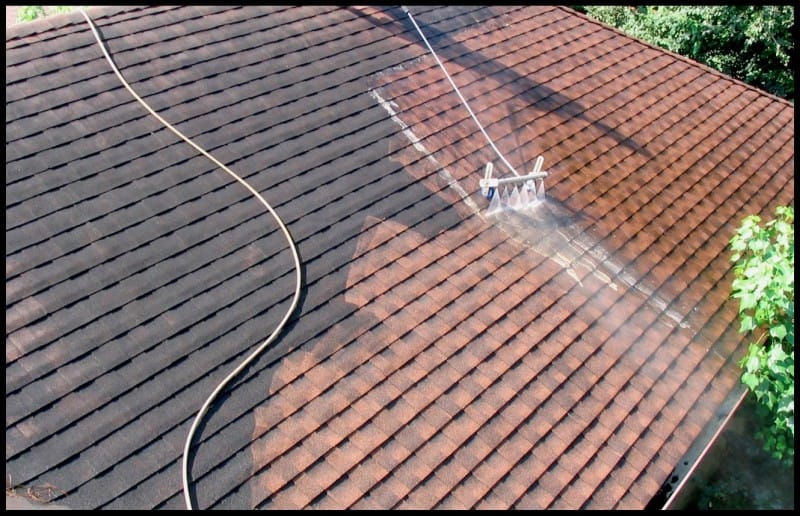
You know your roof protects you.
But have you ever wondered how?
Two words: Roofing Underlayment.
It’s not the roof but this layer of protection that prevents water from entering your house among other things. Without it, your roof will be vulnerable to the harsh elements of the weather.
What Is Roofing Underlayment?
It is a waterproof or water-resistant barrier material that is installed on the roof deck. The material goes directly underneath the roof and stands as a protective shield against severe weather.
If your roof develops a crack, you can rest easy because this underlayment will prevent further damage.
There are three types of underlayments:
- Rubberized Asphalt Underlayment (waterproof *)
- Asphalt-Saturated Felt Underlayment (water-resistant *)
- Non-Bitumen Synthetic Underlayment (water-resistant *)
The first underlayment is waterproof, while the remaining two are water-resistant.
*Note: Most people are confused regarding the difference between water-resistant and waterproof. The former term (water-resistant) means that the underlayment can withstand water, but only for a certain period of time. On the other, the latter term (waterproof) means that the underlayment is completely protected from water.
Rubberized Asphalt Underlayment
Rubberized asphalt contains rubber polymers and asphalt. Amongst the three underlayments, it is the most expensive one because it is waterproof.
This underlayment is like a sticky paper. Before this underlayment is applied, its back membrane is removed. The sticky material is what acts as a waterproof seal. It also protects the roof edges from causing leaks. This material proves pretty beneficial in areas such as roof protrusions and valleys on the roof.
Pros
- The only Waterproof material for this type of job.
- Low installation cost: It may be expensive, but it is easy to apply
- Longevity: Rubberized asphalt comes in rolls, which means there are few seams. This lowers the chances of water entering the attic. This underlayment can last for 50 years.
- UV resistant: It is resistant to the sun’s ultraviolet rays.
- Durable: Compared to pure asphalt, rubber does not crack, expand, or contract due to weather changes.
- Easy to repair: A special type of tape is used for repairing any tears in the rubber. This usually does the trick.
Cons
- Rubberized underlayment comes in many forms. Some are resistant to fire and some are not.
- You need a professional to install this underlayment, which can add to the cost.
Asphalt-Saturated Felt Underlayment
Known as “tar paper,” this underlayment is made from varying blends of polyester, bitumen, cellulose, or asphalt. It is one of the most common materials used in older houses and usually comes in two different thicknesses: 15-pound and 30-pound. The 30-pound thickness is obviously more resistant to damage and will last longer (see video below):
Asphalt saturated felt is not recommended in areas where it frequently rains. The price of felt varies and mostly depends on the amount of asphalt in it. The more the asphalt content in the underlayment, the more durable and costly it will be.
Pros
- Budget-friendly
- Contains fiberglass, which increases its durability and strength
- Good for low slope roofs as water will slide away easily
Cons
- Weighs more than rubberized asphalt underlayment and non-bitumen synthetic underlayment
- Installation is pretty costly
- Degrades pretty easily if exposed to external environment
- Vulnerable to sun damage
Non-Bitumen Synthetic Underlayment
This synthetic underlayment contains asphalt, along with fiberglass, polyethylene and polypropylene. These three materials give it superior stability and make it resistant to tears. Some manufacturers, add a slip resistance material to it, which protects it from water.
Pros
- Long lasting and durable
- Lightweight
- Prevents water leaks and ice dams
- Fungus resistant
- Is not vulnerable to direct UV radiation
- Easy and safe to install
Cons
- Depending on the materials used in the manufacturing, it can be very expensive, which is its biggest and only drawback
To conclude, if you are installing a new roof, we would suggest that you choose Rubberized Asphalt underlayment. Yes, it is a little more on the expensive side but it will outlast the other material types and will surely protect your house from water leaks, mold and mildew.
Now let us discuss some frequently asked questions that many people have about roofing ubderlayment.
Is roof underlayment necessary?
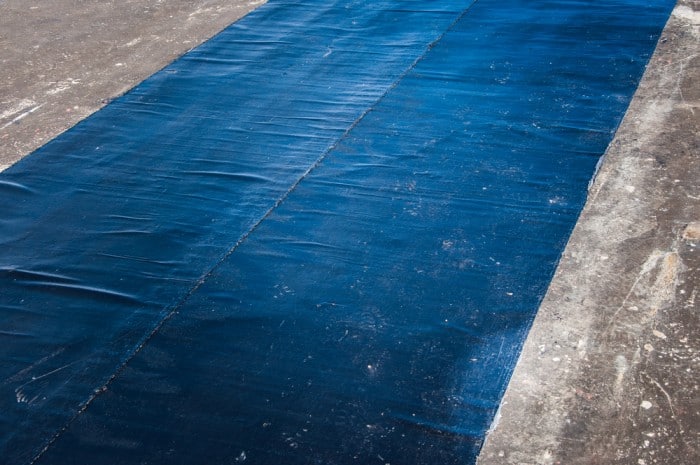
Roof underlay is more than necessary; it’s the key to having your roof last for years. Roof underlayment is the water-resistant and/or waterproof barrier material that covers the entirety of your roof deck before you add that roof.
Once installed, it offers a much-needed layer of protection from the most severe weather. There are three types of products that fall under the underlayment umbrella: asphalt-saturated felt, non-bitumen synthetic and rubberized asphalt underlayment. Only the rubberized one is waterproof. The other two are water-resistant.
Despite the fact that shingles and other types of roofing material serve as a protective covering for your home or building, underlayment serves myriad purposes.
For example, while shingles overlap, corners aren’t always properly sealed from the elements and if strong winds blow, underlayment to the rescue if roofing materials don’t stand up to weather fluctuations.
Some roofing materials can become brittle with age, and disaster, in the form of an unventilated attic, could further stress out a roof if there’s no underlayment to protect rooms below.
Contractors say that the most vulnerable under-roof areas requiring protection are eaves, valleys, protrusions and low-slope roof surfaces. This is where underlayment comes to the rescue, so homes stay dry and your investment remains protected.
Is synthetic roofing underlayment better than asphalt-saturated felt?
This debate rages among roofers who have preferences, so you might say that both types of underlayments have their own fan clubs.
Synthetics are favored for myriad reasons: they install fast, remain steadfast in high winds and when exposed to bad weather, they offer better traction that asphalt-saturated products. But synthetics come at a cost: They’re more expensive, especially if you choose a synthetic that is categorized as a vapor-permeable product.
Asphalt felt, on the other hand, has an older track record, it’s also easy to install and you won’t go broke if you choose this material. Asphalt-saturated layment was the only option on the market until around 15 years ago when synthetics–known also as non-bitumen synthetic underlayment–became available.
That stated, you may have no choice about the underlayment you choose if local building codes require the installation of asphalt felt.
Some building codes stipulate this material for it’s fire-resistant properties. Sold in grades (#15 or #30), felt underlayment is typically crafted of recycled corrugated paper and sawdust and “impregnated” with asphalt. While it acts as a vapor barrier, this material is best avoided in cases where attics and decks are poorly ventilated.
Your final option, rubberized asphalt, is the only truly waterproof product on the market and it’s extremely expensive, but in areas known for severe winters, rubberized asphalt is often the most highly-recommended and favored by roofers eager to make sure your building has the best protection against cold weather extremes.
What is the best roofing underlayment for metal roof?
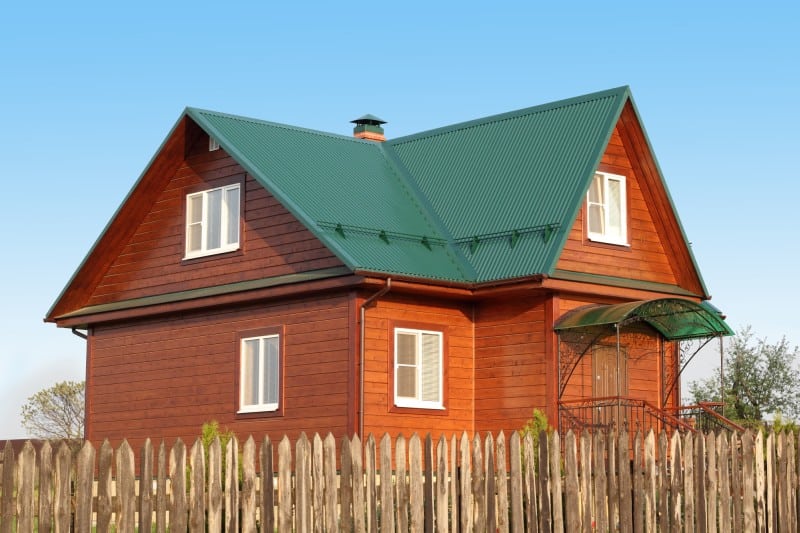
Metal roofs offer outstanding waterproofing properties, this roof type is affordable, and it won’t take forever to roof a building if metal is chosen.
Which type of underlayment will get you the most protection and bang for your buck? Just about anything on the market, according to professionals.
Rule of thumb is that if it’s manufactured to be installed under tile roofs, it can be used beneath a metal roof, too.
However, if you had to choose one material type of underlaymet for metal roofs, then synthetic underlayment is the best choice compared to the asphalt types of products.
Metal roof underlayment products usually consist of three layers. The first serves as an ice and water shield that is likely made of rubberized-asphalt or butyl-based adhesive with a polyethylene carrier sheet.
The second layer is commonly a reinforced polypropylene scrim that’s constructed of multiple layers to add a moisture barrier.
The third layer, an essential for homes with metal roofs in areas where the climate is hot, offers reflective or breathing insulation properties that mediate heat build-up, so it’s diffused.
One word of caution if you’re deciding between underlayments for your roof: be sure to choose one that won’t scratch those metal roof panels.
What is the best roofing underlayment for tile roofs?
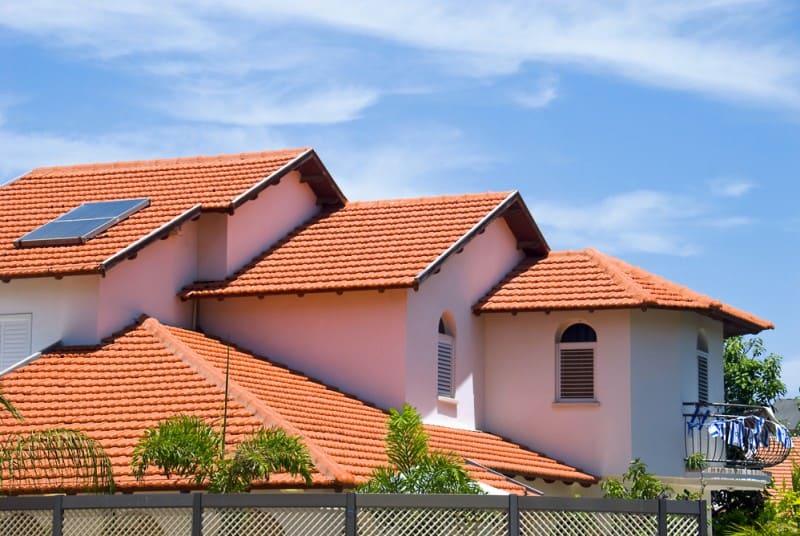
Since underlayment and flashings create the most critical water barrier protection, you might say that they’re even more important than the roof itself.
Tiles provide the finishing touch adding curb appeal to a home or building so the exterior is beautifully put together. Pair tiles with a proper underlayment and as long as both are installed expertly, you can look forward to 50 years of service.
In terms of tile underlayment materials and construction, you’ll hear a lot about “paper” and “felt,” but most often, these are used interchangeably and referred to as “organic felt paper.”
But felt isn’t the only material you’ll run into: fiberglass mesh may be substituted for this more traditional material. That stated, underlayment materials are regularly categorized by weight.
For example, “90-pound paper” describes a cheap, low-quality gravel-coated material to be used only if there is nothing else around.
A better choice would be a product that consists of 2 layers of 30-pound, asphalt-impregnated felt. This material is likely to last from 20 to 30 years. Upgrade to a double layer of heavy-duty, SBS-modified asphalt underlayment and you’re going to be set for the long haul.
The fiberglass option mentioned earlier remains available to you if you’re convinced it’s the best way to support your tile roof and if you keep up with roofing trends, you know that peel-and-stick self-adhesive membranes that are bonded directly to the roof are currently a favorite of roofers eager to save time, money and energy.
This material is made with synthetic rubber additives and if you choose the 40-pound version, you’ll increase the life of your roof by impressive numbers.
What is the best roofing underlayment for shingles?
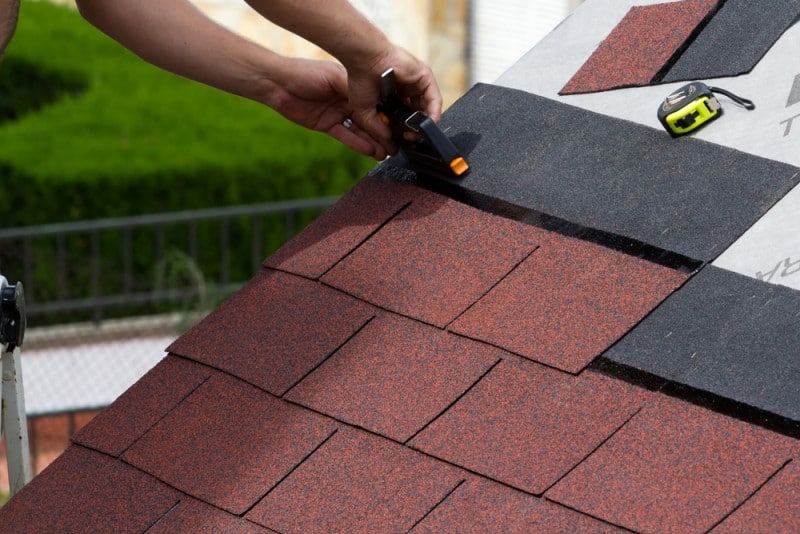
Once upon a time, there was only one type of shingle underlayment and you’ll recognize the name if you’ve read this far: Felt-paper.
As the industry welcomed new materials that proved more efficient, sturdy and versatile, myriad moisture-repelling layers were introduced to the market to underpin shingles. The most popular and best-selling alternatives these days for shingle roofs? Synthetics.
Like the synthetic underlayments described in the aforementioned categories, synthetics come with higher price tags, but offer unique advantages that have no comparison. They are lighter weight, offer superior water resistance and when it comes to lying flat so shingles won’t waffle or warp, there is no substitute.
How efficient are synthetic underlayments? So much so, they can serve as a roofing material without shingles for short amounts of time if necessary!
What makes these products so sturdy and adds years of life to a roof? The fact that they usually consist of two different membranes.
The first is installed along the roof perimeter where roof planes form valleys so these areas are sealed. The second layer consists of tear- and water-resistant material that not only seals the deck but offers a high-traction surface so shingle installers can complete the job more efficiently and safely.
Related Posts
- What Type of Plywood is used for Roofing? Size and Thickness Guide
- Advantages and Disadvantages of Solar Roof Vents for Homes
- 10 Different Types of Snow Guards for Metal Roofs
- Advantages and Disadvantages of Roof Ridge Vents for Homes
- 5 Unique Roof Upgrades to Consider for Your Home
- Pros and Cons of TPO Roofing – Cost, Advantages, Disadvantages
Leave a Reply